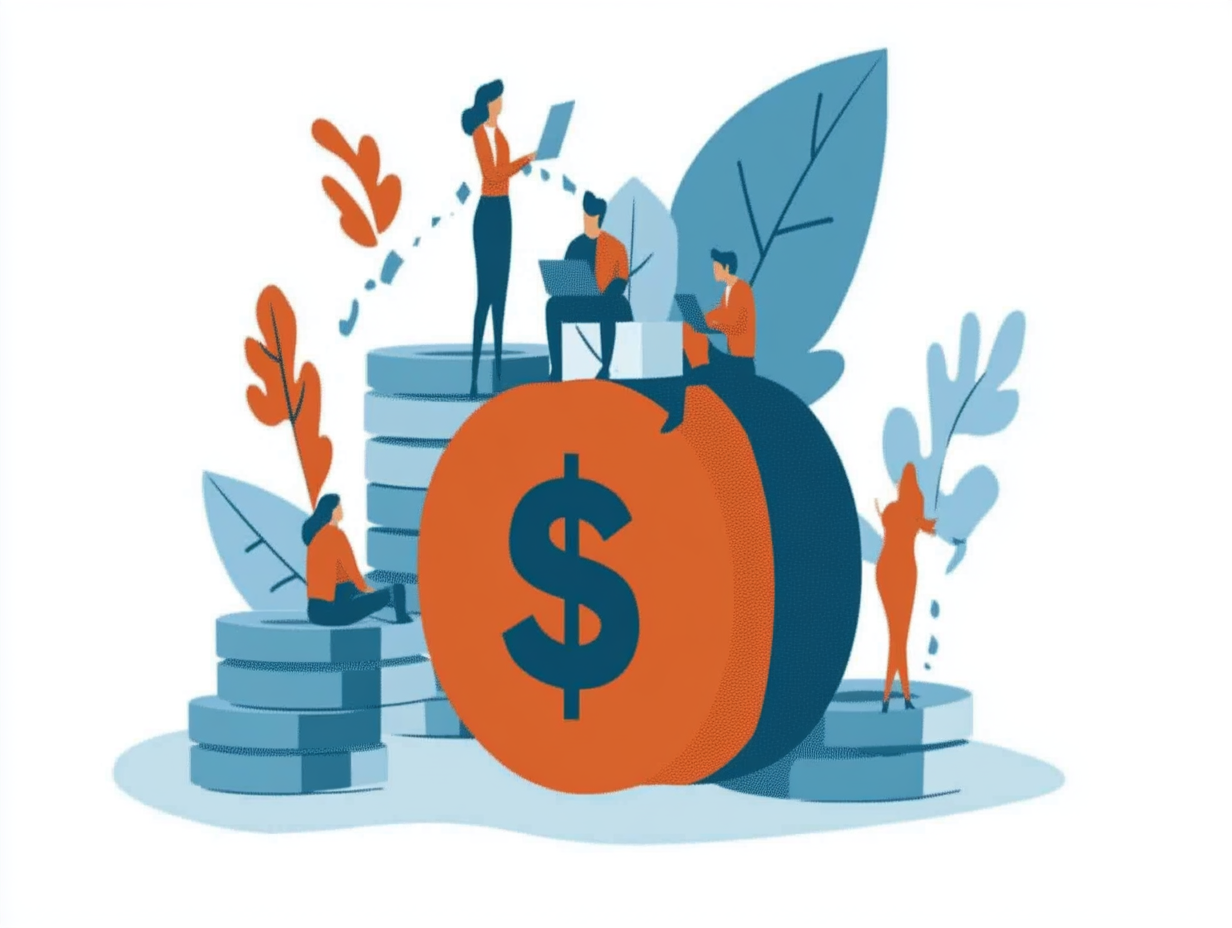
Understanding the 401k Loan: Key Pros and Cons Explained
A 401k loan lets you borrow from your retirement savings without immediate tax penalties. This article explains how it works, its benefits, and its downsides.
Key Takeaways
-
A 401k loan allows individuals to borrow from their retirement savings without immediate tax penalties, with limits set at $50,000 or 50% of the vested balance.
-
While 401k loans offer accessibility and lower interest rates compared to other loans, they can hinder long-term retirement growth and lead to double taxation if not repaid appropriately.
-
Before opting for a 401k loan, consider alternatives like personal loans or credit cards, and ensure a solid repayment strategy to avoid potential financial penalties.
What is a 401k Loan?

A 401 k loan is a financial tool that allows you to borrow money from your own retirement savings account. It offers a way to access funds without the immediate tax implications and penalties typically associated with early withdrawals from your retirement account. You can borrow up to $50,000 or 50% of your vested balance, whichever is lower. This 401 k loan is often used for short-term financial needs, such as paying off high-interest credit card debt.
A key advantage of a 401 k loans is accessing your retirement funds for immediate financial needs without facing taxes or penalties initially. This aspect makes it an attractive option for those facing urgent financial needs.
However, 401 k loans have specific rules and limitations that require careful consideration.
How Does a 401k Loan Work?
First, confirm with your employer if your retirement plan permits loans. The process is generally straightforward and can often be completed online, making it convenient for many employees.
After deciding to proceed, contact the 401k plan administrator to review the necessary documents and evaluate your qualification. A perk of a 401k loan is the absence of credit checks, keeping your credit score unaffected.
The application process is usually quick and easy, with funds disbursed within days of approval.
Borrowing Limits
401k loans come with specific borrowing limits. You can borrow up to 50% of your vested account balance or a maximum of $50,000, whichever is lower. If your vested account balance is less than $10,000, the maximum loan amount is capped at $10,000. This ensures that even those with smaller retirement accounts can still access necessary funds.
You can only take one 401k loan every 12 months. If you already have an outstanding loan, the maximum amount you can borrow will be reduced by the amount of that existing loan. These limits balance liquidity needs with the preservation of retirement savings.
Repayment Terms
Repayment terms for a 401k loan are usually structured over five years, although this can vary by employer’s plan. Repayments must be made on an amortizing basis with a fixed schedule, usually requiring substantially level payments at least quarterly. Adhering to these terms is important to avoid financial penalties.
If you fail to repay your 401k loan, it can be classified as a distribution, making it subject to taxes and penalties, particularly if you leave your job. You can repay the loan sooner without prepayment penalties, offering flexibility in managing your finances.
Interest Rates
401k loan interest rates are generally tied to the prime rate plus a margin set by your plan. The prime rate often serves as the basis, keeping these interest rates relatively low compared to other borrowing options. This can make 401k loans an attractive alternative to higher-interest personal loans, especially when considering the overall interest rate environment.
A unique aspect of 401k loans is that the interest you pay returns to your own retirement account. This means that, unlike traditional loans where interest payments go to a lender, you’re essentially paying yourself back. This feature mitigates some drawbacks of borrowing from your retirement savings.
Pros of Taking a 401k Loan

Taking a 401k loan offers several advantages, making it appealing for many. Firstly, accessibility is a major benefit. Unlike traditional loans, 401k loans don’t require a credit check, making them available regardless of credit score. This can be especially beneficial for those who may not qualify for other types of personal loans.
Another benefit is the lower interest rates. These rates are usually lower than those for personal loans, making it a cost-effective borrowing option. The process of obtaining a 401k loan is generally quick, with funds often disbursed within days of application approval, providing a swift solution for immediate needs.
Defaults on 401k loans are not reported to credit bureaus, so they do not impact your credit score. This combined with the liquidity and simplicity of borrowing from your retirement account makes 401k loans an attractive, low-cost cash source.
Cons of Taking a 401k Loan

However, borrowing from your 401k does have drawbacks. A primary concern is that it can reduce the amount of money growing tax-free in your retirement account. This can lead to missing out on potential investment gains, significantly impacting your long-term retirement savings.
Repaying the loan with after-tax income means you could end up paying income taxes twice on the same funds. Failure to repay the loan classifies it as a distribution, resulting in tax liabilities and potential penalties, especially if you leave your job and pay taxes on the amount. This situation can be financially burdensome, especially if the entire loan balance becomes immediately due upon job termination.
Borrowing from your 401k might reduce your regular contributions during repayment, further hindering retirement savings growth. These factors highlight the importance of carefully considering the downsides before taking out a 401k loan.
Impact on Retirement Savings

Borrowing from your 401k significantly impacts your retirement savings. A major drawback is missing out on investment opportunities during the loan period. The borrowed money is no longer invested, so it cannot grow with market gains.
Conversely, if the interest paid on the loan exceeds lost investment earnings, it can increase your retirement savings. However, this is often not the case, and the impact on investment returns varies with market conditions.
Another concern is that contributions to your retirement account may decrease while repaying the loan, which can slow the growth of your retirement savings.
Alternatives to a 401k Loan

Before deciding on a 401k loan, consider other financial options. Personal loans, though often with higher interest rates, are an alternative. Credit cards with 0% introductory rates can be a temporary solution if managed carefully to avoid high-interest debt.
Home equity loans often offer lower interest rates but risk foreclosure if not repaid. Refinancing a mortgage can provide cash access but may extend the loan term, affecting long-term financial plans. For high-interest debts like credit cards, using a 401k loan can be advantageous, but weigh the long-term impacts on retirement savings.
For unexpected medical expenses or imminent foreclosure, a 401k loan can be preferable to a hardship withdrawal, as it avoids immediate taxes or penalties. Exploring all available options, including emergency savings, ensures you make the best financial decision for your situation.
When to Consider a 401k Loan
A 401k loan can be viable in specific scenarios. Unexpected expenses due to financial stress or emergencies may lead individuals to consider this loan. In emergencies where other credit options are unavailable, a 401k loan can provide necessary funds without a credit check.
Consider a 401k loan when there are urgent, necessary needs and no other sources of funds. Evaluate other options first to ensure this is the best choice. In some cases, a 401k loan may be preferable to bankruptcy, avoiding the long-term impacts of bankruptcy filings.
Repayment Strategies
A clear repayment strategy is critical to avoid financial penalties associated with a 401k loan. Many borrowers choose automatic payroll deductions to ensure timely repayments. Repayments must occur at least quarterly, typically through payroll deductions, making it easier to manage the schedule.
When creating a loan repayment plan, consider payment frequency and the loan repayments amount. Evaluate your ability to repay the loan, as failure can result in tax penalties if classified as a distribution.
If you leave your job while having a 401k loan, you may need to repay the full outstanding loan balance immediately, so plan for this scenario.
Employer Involvement
Employer involvement is critical in the 401k loan process. Typically, the plan administrator manages 401k loan approvals. The human resources department usually facilitates the arrangement, ensuring all necessary documentation is completed. Employers maintain records and are notified when an employee takes out a 401k loan.
Access to funds depends on regulations set by your retirement plan, and some plans may restrict contributions until the borrowed amount is repaid. Employers are not obligated to provide loan options in their 401k plans, so checking with your employer is the first step.
Summary
In conclusion, understanding the intricacies of a 401k loan is vital for making informed financial decisions. While it offers several advantages such as accessibility and lower interest rates, it also comes with significant risks that could impact your retirement savings. Carefully considering alternatives and having a solid repayment plan can help mitigate these risks. Ultimately, the key is to weigh the pros and cons and choose the option that best aligns with your financial goals and needs.
Frequently Asked Questions
What is a 401(k) loan?
A 401(k) loan enables you to borrow against your retirement savings without immediate tax penalties or fees, allowing for up to 50% of your vested balance or a maximum of $50,000. However, it's important to consider the long-term impact on your retirement savings before taking a loan.
How do I repay a 401(k) loan?
To repay a 401(k) loan, make regular payments through payroll deductions over a typical five-year term, but you can also pay it off early without incurring any penalties. Ensure that you stay on schedule to avoid potential tax consequences.
What happens if I leave my job with an outstanding 401(k) loan?
Leaving your job with an outstanding 401(k) loan typically requires you to repay the full loan balance immediately. If you don't, the loan may be considered a taxable distribution, resulting in potential tax consequences.
What are the interest rates for a 401(k) loan?
The interest rates for a 401(k) loan are generally based on the prime rate plus an added margin set by your plan. Importantly, the interest you pay is returned to your retirement account.
Are there alternatives to taking a 401(k) loan?
Yes, you can consider personal loans, credit cards with 0% introductory rates, home equity loans, or refinancing your mortgage as alternatives to a 401(k) loan. Evaluate each option's advantages and disadvantages to determine the best fit for your financial situation.
%20512x512%20google%20store%20app%20logo%20SEPT%2024%2c%202025%20(4)-png.png?width=51&height=51&name=USE!!%20)%20512x512%20google%20store%20app%20logo%20SEPT%2024%2c%202025%20(4)-png.png)



